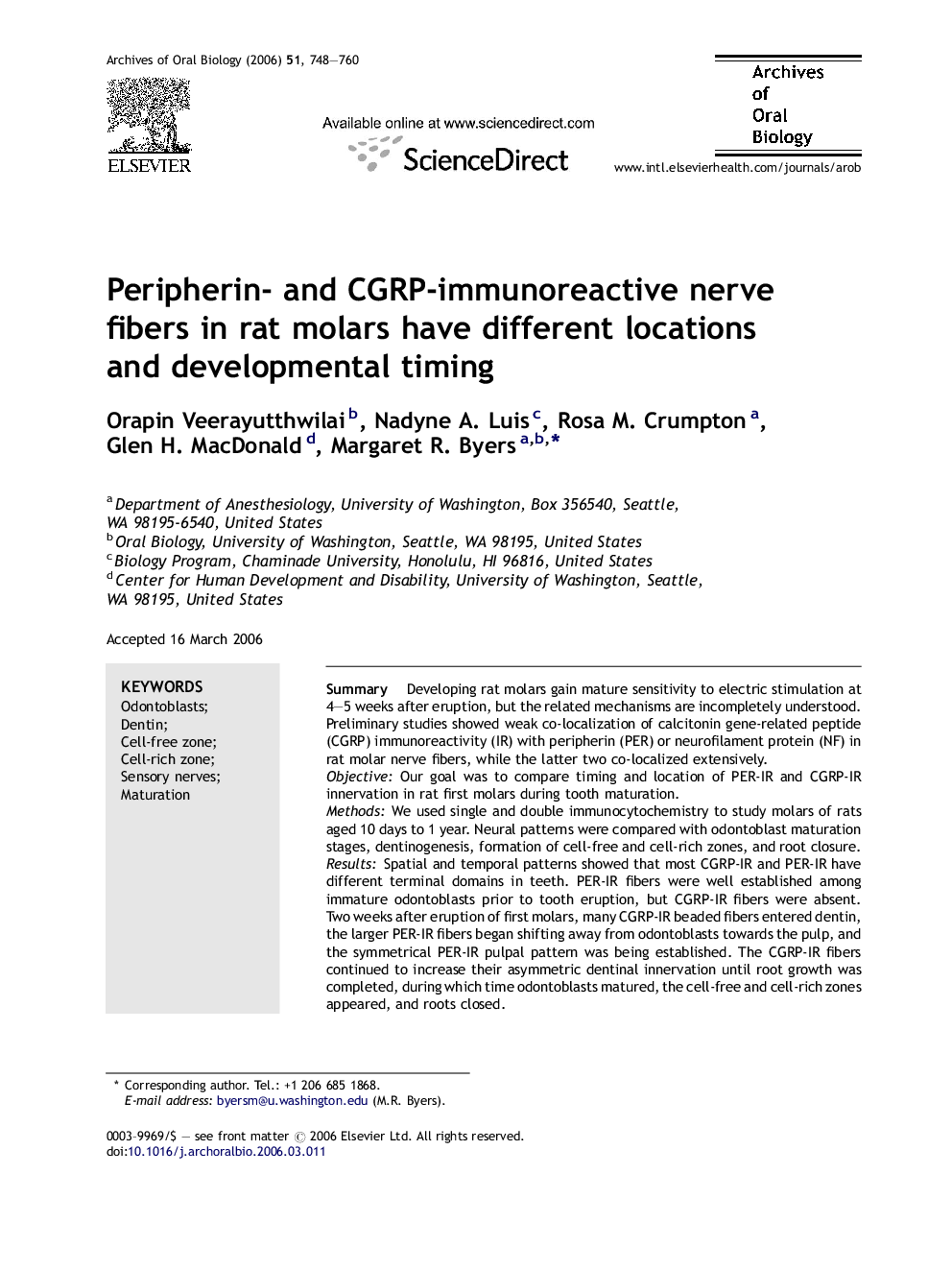| Article ID | Journal | Published Year | Pages | File Type |
|---|---|---|---|---|
| 3121334 | Archives of Oral Biology | 2006 | 13 Pages |
SummaryDeveloping rat molars gain mature sensitivity to electric stimulation at 4–5 weeks after eruption, but the related mechanisms are incompletely understood. Preliminary studies showed weak co-localization of calcitonin gene-related peptide (CGRP) immunoreactivity (IR) with peripherin (PER) or neurofilament protein (NF) in rat molar nerve fibers, while the latter two co-localized extensively.ObjectiveOur goal was to compare timing and location of PER-IR and CGRP-IR innervation in rat first molars during tooth maturation.MethodsWe used single and double immunocytochemistry to study molars of rats aged 10 days to 1 year. Neural patterns were compared with odontoblast maturation stages, dentinogenesis, formation of cell-free and cell-rich zones, and root closure.ResultsSpatial and temporal patterns showed that most CGRP-IR and PER-IR have different terminal domains in teeth. PER-IR fibers were well established among immature odontoblasts prior to tooth eruption, but CGRP-IR fibers were absent. Two weeks after eruption of first molars, many CGRP-IR beaded fibers entered dentin, the larger PER-IR fibers began shifting away from odontoblasts towards the pulp, and the symmetrical PER-IR pulpal pattern was being established. The CGRP-IR fibers continued to increase their asymmetric dentinal innervation until root growth was completed, during which time odontoblasts matured, the cell-free and cell-rich zones appeared, and roots closed.ConclusionsSensory maturation of rat molars coincides with closed root apices, extensive innervation of dentin by CGRP-IR nerve fibers, and the appearance of the mature avascular odontoblast layer next to cell-free and cell-rich zones in the pulp horns.
